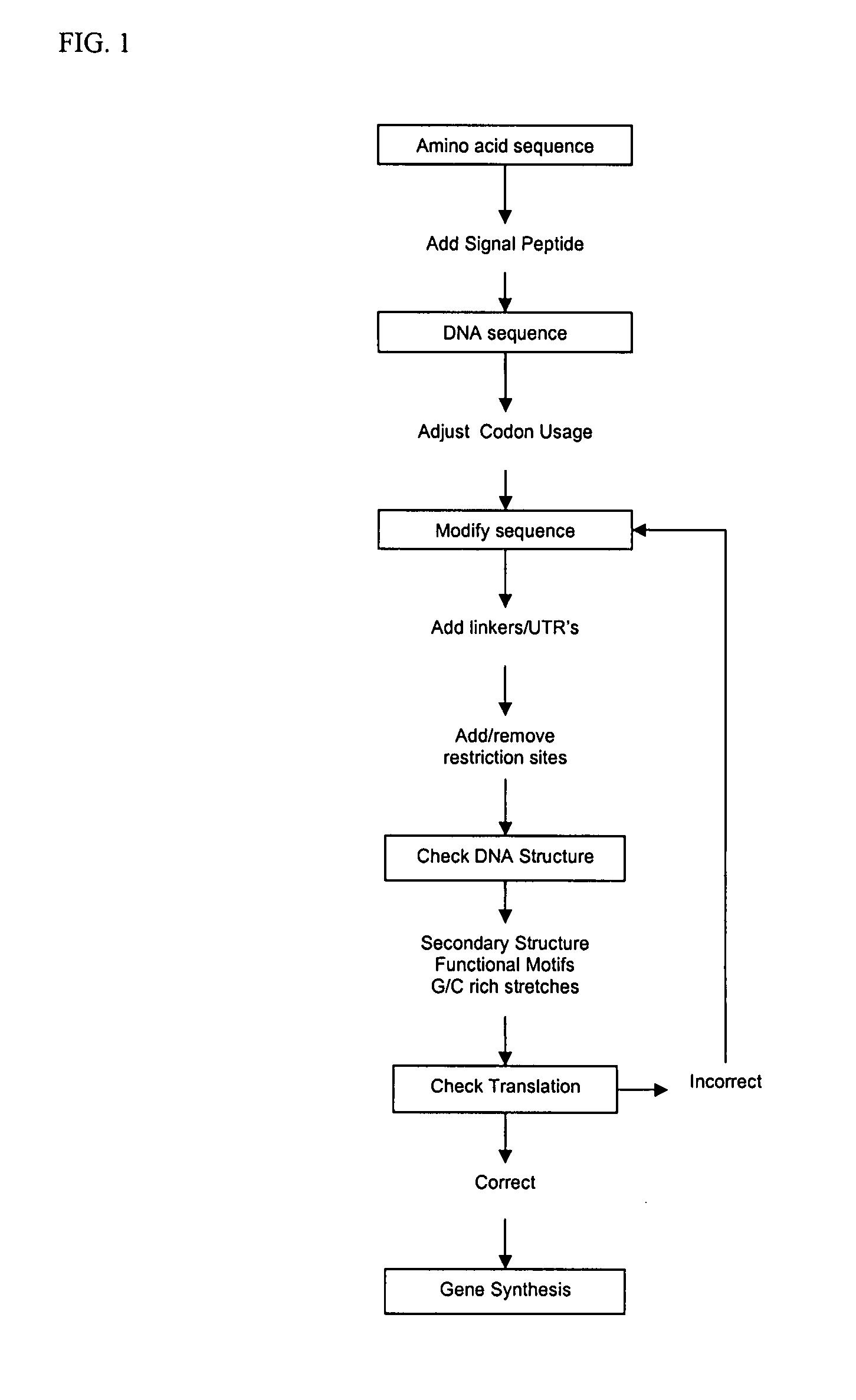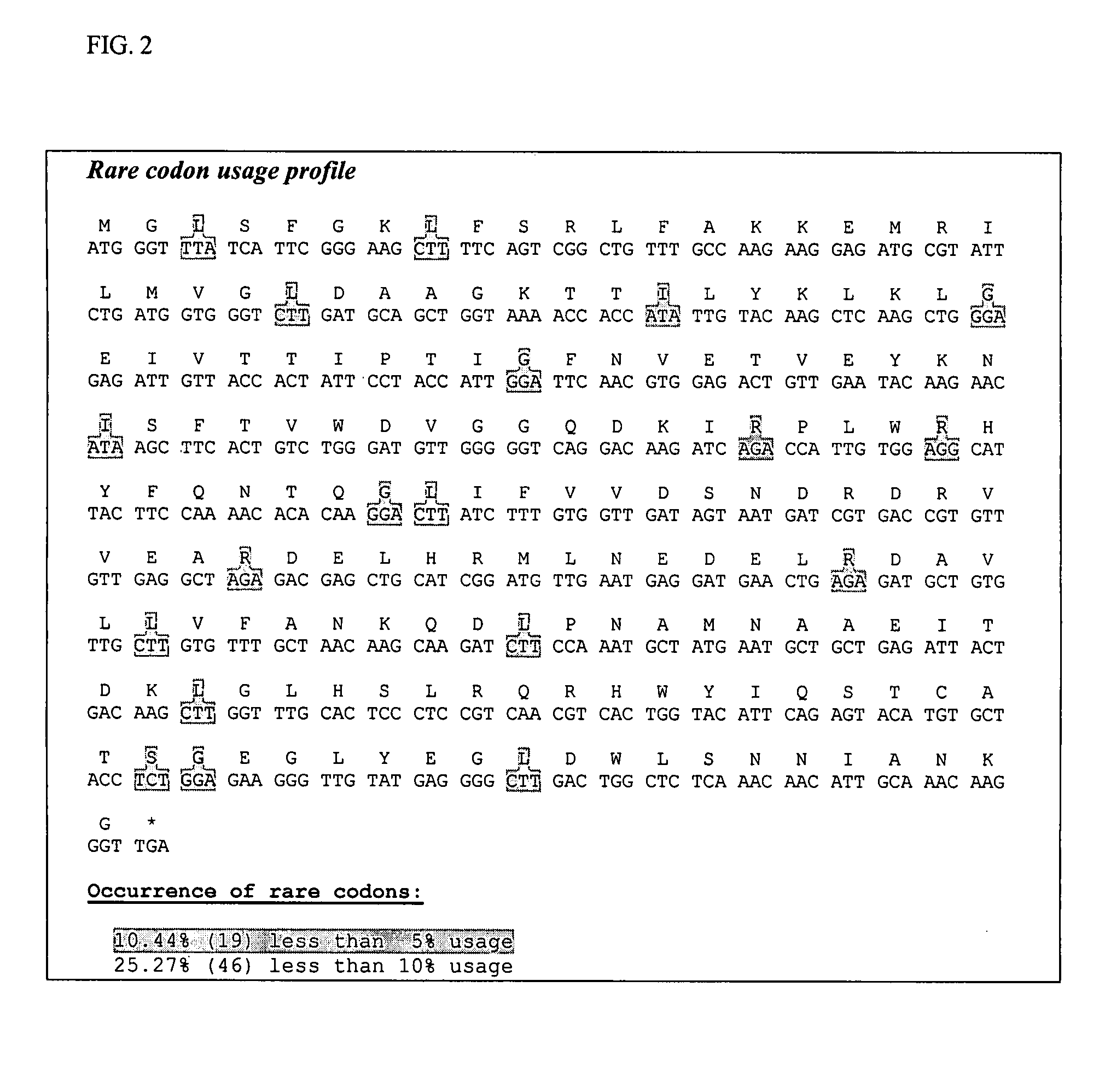Codon optimization method
a gene and codon technology, applied in the field of codon optimization methods, can solve the problems of delayed and reduced expression of recombinant genes, reduced gene-scale dna synthesis, and very different use of rare codons
- Summary
- Abstract
- Description
- Claims
- Application Information
AI Technical Summary
Benefits of technology
Problems solved by technology
Method used
Image
Examples
example 1
Design of Synthetic Gene from P. fluorescens
[0074] A DNA region containing an optimal Shine-Dalgamo sequence and a unique SpeI restriction enzyme site was added upstream of the coding sequence. A DNA region containing three stop codons and a unique XhoI restriction enzyme site was added downstream of the coding sequence. All rare codons occurring in the Pfenex ORFome with less than 5% codon usage were modified to avoid ribosomal stalling. All gene-internal ribosome binding sites which matched the pattern aggaggtn5-10dtg with two or fewer mismatches were modified to avoid truncated protein products. Stretches of five or more C, or five or more G nucleotides were eliminated to avoid RNA polymerase slippage. Strong gene-internal stem-loop structures, especially ones covering the ribosome binding site, were modified. The synthetic gene was synthesized by DNA2.0, Inc. (Menlo Park, Calif.).
example 2
Design of Synthetic Gene from P. fluorescens
[0075] The amino acids from methionine 21 to glutamine 520 were included in the final expressed protein product. All rare codons occurring in the Pfenex ORFome with less than 5% codon usage were modified to avoid ribosomal stalling. All gene-internal ribosome binding sites which matched the pattern aggaggtn5-10dtg with two or fewer mismatches were modified to avoid truncated protein products. Stretches of five or more C or five or more G nucleotides were eliminated to avoid RNA polymerase slippage. Strong gene-internal stem-loop structures, especially ones covering the ribosome binding site, were modified. A DNA sequence encoding the 24 amino acid pbp periplasmic secretion leader was fused to the 5′ end of the optimized sequence. A DNA region containing an optimal Shine-Dalgamo sequence and a unique SpeI restriction enzyme site was added upstream of the coding sequence. A DNA region containing three stop codons and a unique XhoI restricti...
PUM
| Property | Measurement | Unit |
|---|---|---|
| secondary structure | aaaaa | aaaaa |
| secondary structures | aaaaa | aaaaa |
| stability | aaaaa | aaaaa |
Abstract
Description
Claims
Application Information
 Login to View More
Login to View More - R&D
- Intellectual Property
- Life Sciences
- Materials
- Tech Scout
- Unparalleled Data Quality
- Higher Quality Content
- 60% Fewer Hallucinations
Browse by: Latest US Patents, China's latest patents, Technical Efficacy Thesaurus, Application Domain, Technology Topic, Popular Technical Reports.
© 2025 PatSnap. All rights reserved.Legal|Privacy policy|Modern Slavery Act Transparency Statement|Sitemap|About US| Contact US: help@patsnap.com



